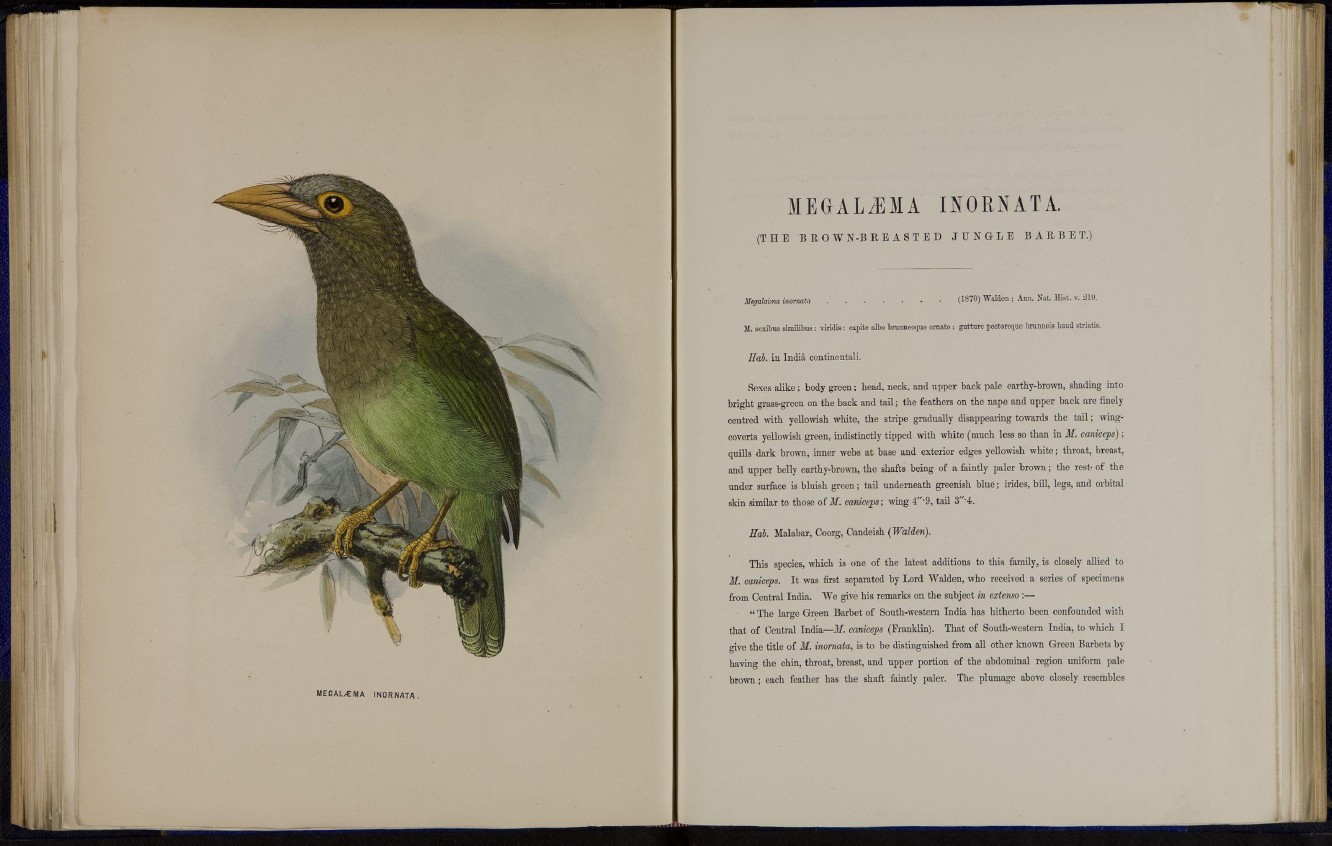
M E G A L ^ M A INORNATA
M E G A L ^ M A INORNATA.
( T H E B R O W N - B E E A S T E D J U N G L E B A R B E T .)
Megalaima inornate (1870) Walden ; Ann. Nat. Hist. v. 210.
31. sexibus similibus : viridis: capitc albo brunneoquc ornato : gutturc pectoreque brunucis baud striatis.
Hab. in India continentali.
Sexes a l i k e ; body green; head, neck, and upper back pale earthy-brown, shading into
bright grass-green on the back and tail; the feathers on the nape and upper back are finely
centred with yellowish white, the stripe gradually disappearing towards the t a i l ; wingcoverts
yellowish green, indistinctly tipped with white (much less so than in M. caniceps);
quills dark brown, inner webs at base and exterior edges yellowish white; throat, breast,
and upper belly earthy-brown, the shafts being of a faintly paler brown; the rest- of the
under surface is bluish green; tail underneath greenish blue; irides, bill, legs, and orbital
skin similar to those of M. caniceps; wing 4"'9, tail 3"-4.
Hab. Malabar, Coorg, Candeish (Walden).
This species, which is one of the latest additions to this family, is closely allied to
M. caniceps. It was first separated by Lord Walden, who received a series of specimens
from Central India. We give his remarks on the subject in extenso :—
" The large Green Barbet of South-western India has hitherto been confounded with
that of Central India—M. caniceps (Franklin). That of South-western India, to which I
give the title of M. inornata, is to be distinguished from all other known Green Barbets by
having the chin, throat, breast, and upper portion of the abdominal region uniform pale
brown ; each feather has the shaft faintly paler. The plumage above closely resembles